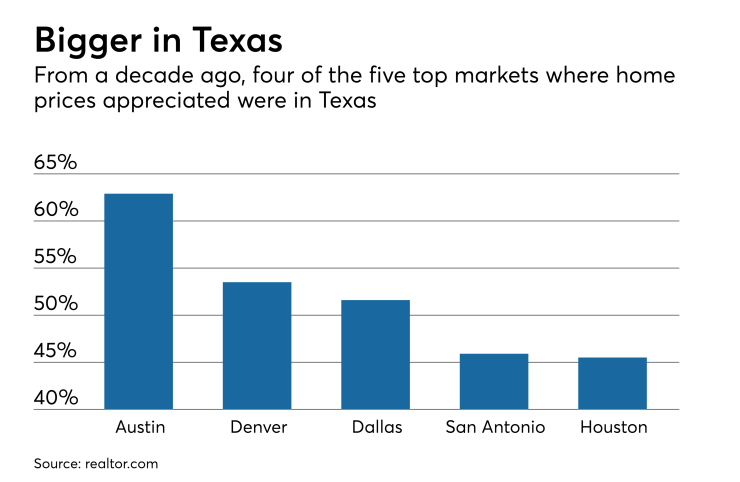Home prices have returned to the boom levels of 10 years ago, which originally signaled the bursting of the housing bubble and the onset of the Great Recession, but today's market is notably different, according to realtor.com.
In 2017, home price appreciation shows no signs of boom-era flipping or over-construction, but rather is being driven by tight supply and high demand, at a time when lending standards are much tighter and economic fundamentals more solid.

"As we compare today's market dynamics to those of a decade ago, it's important to remember rising prices didn't cause the housing crash," said Danielle Hale, chief economist for realtor.com. "It was rising prices stoked by subprime and low-documentation mortgages, as well as people looking for short-term gains, versus today's truer market vitality, that created the environment for the crash."
With lending standards at their tightest in nearly 20 years, a significant difference today is marked by the Dodd-Frank Wall Street Reform and Consumer Protection Act, which requires loan originators to show verified documentation that a borrower has the ability to repay.
"Lending standards are critical to the health of the market," added Hale. "Unlike today, the boom's underregulated lending environment allowed borrowing beyond repayable amounts and atypical mortgage products, which pushed up home prices without the backing of income and equity."
Prior to the crisis, amateur house flippers took on multiple loans, with the share of flipped homes exceeding 20% in some cities, like Washington and Chicago. Overbuilding further signaled an unhealthy housing market, as there were 1.4 single-family housing starts for every household formed in 2006. Today, tighter lending has kept both flipping and overbuilding in check.





